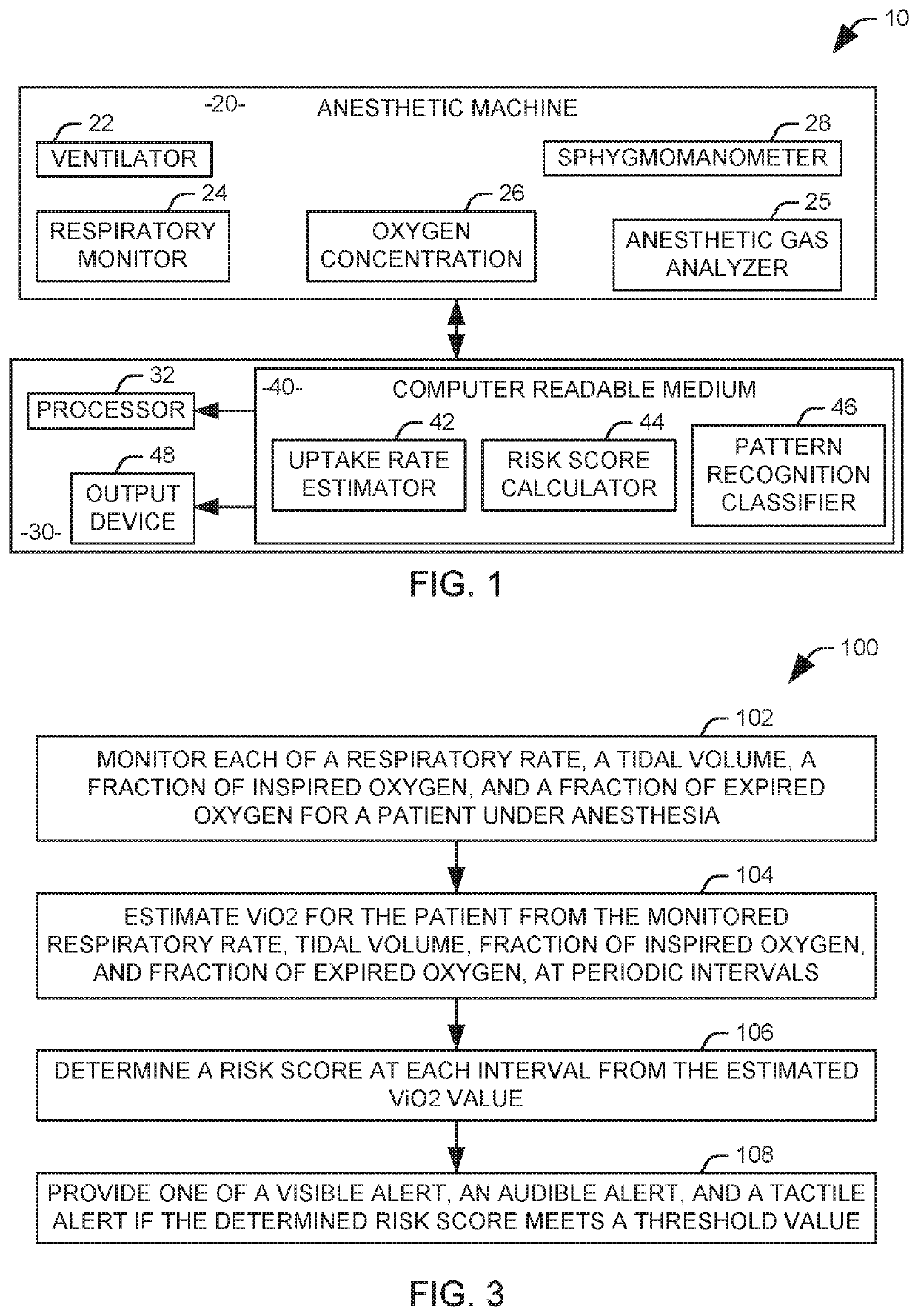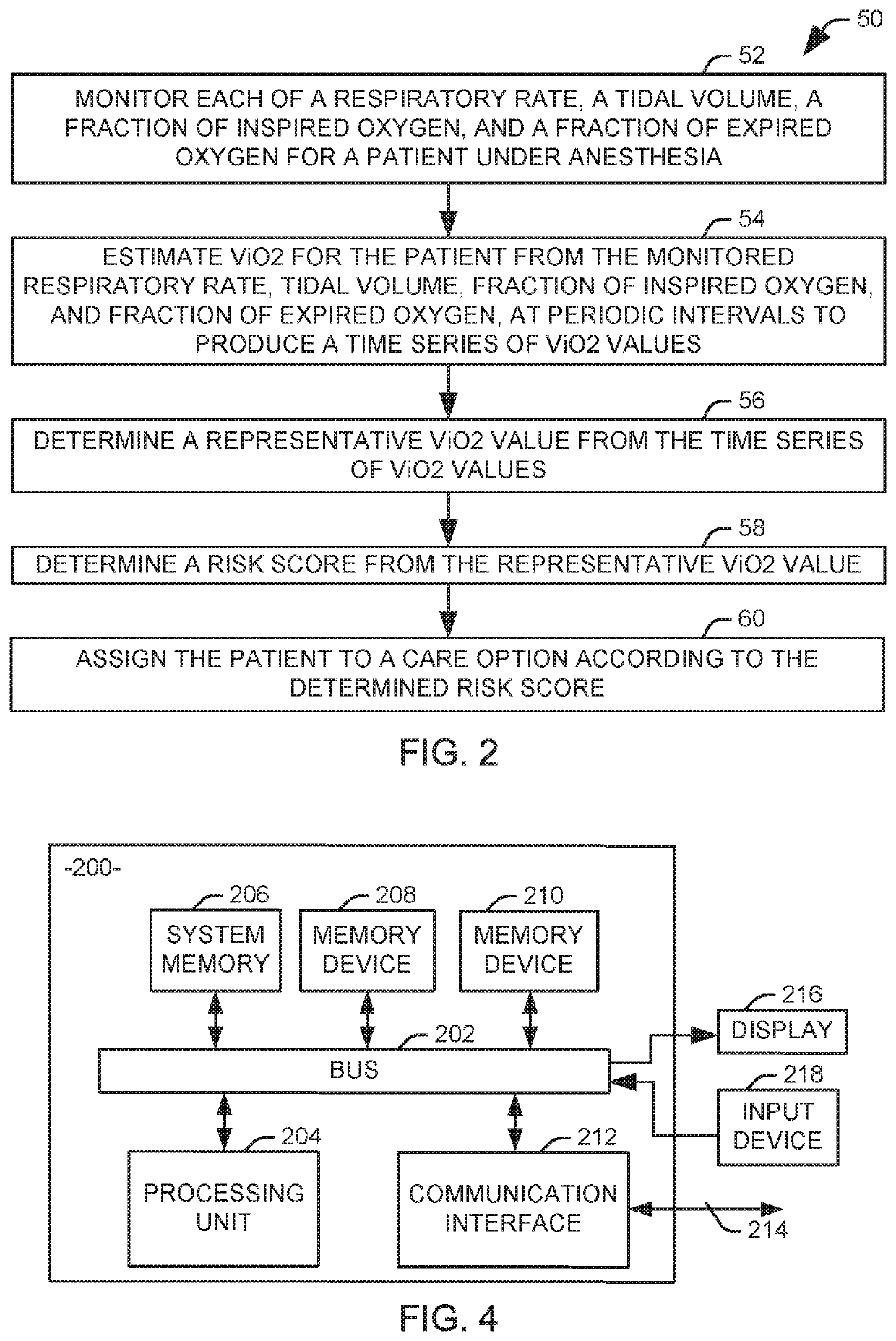Monitoring oxygen uptake of a patient under anesthesia
a technology for monitoring oxygen uptake and anesthesia, applied in the field of medical systems, can solve the problems of difficult identification of patients most likely to benefit from more intensive follow-up care,
- Summary
- Abstract
- Description
- Claims
- Application Information
AI Technical Summary
Benefits of technology
Problems solved by technology
Method used
Image
Examples
Embodiment Construction
[0011]The inventor has provided systems and methods for monitoring the status of a patient during a surgical procedure and assigning the patient to post-surgical care. To this end, each of an arterial blood pressure, an inhaled anesthetic depth, and an estimated pulmonary oxygen uptake rate can be monitored and utilized to calculate a risk score. The risk score can be calculated during surgery from these factors and used to assist in decision making both during and after the surgical procedure. The inventor has found, contrary to accepted practice, that the risk of adverse outcomes for the patient actually increases with pulmonary oxygen uptake and decreases, within reasonable parameters, with the inhaled anesthetic depth. Accordingly, it is believed that the use of this risk score in surgical decision making can decrease the risk of adverse outcomes for patients.
[0012]FIG. 1 illustrates one example of system 10 for monitoring anesthesia delivered to a patient during surgery. The sy...
PUM
 Login to View More
Login to View More Abstract
Description
Claims
Application Information
 Login to View More
Login to View More - R&D
- Intellectual Property
- Life Sciences
- Materials
- Tech Scout
- Unparalleled Data Quality
- Higher Quality Content
- 60% Fewer Hallucinations
Browse by: Latest US Patents, China's latest patents, Technical Efficacy Thesaurus, Application Domain, Technology Topic, Popular Technical Reports.
© 2025 PatSnap. All rights reserved.Legal|Privacy policy|Modern Slavery Act Transparency Statement|Sitemap|About US| Contact US: help@patsnap.com


